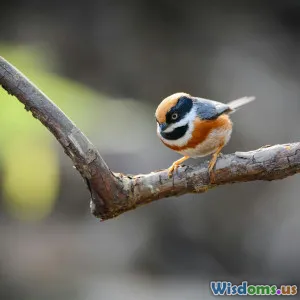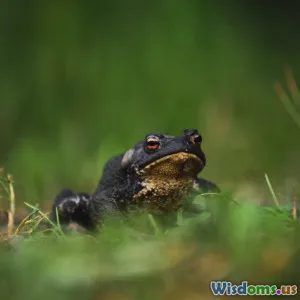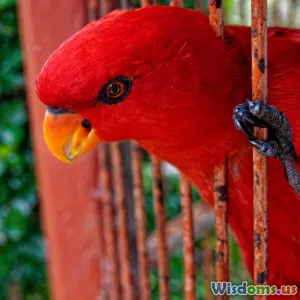
The Interdependence of Species in Nature
6 min read Explore the intricate relationships among species and their vital roles within ecosystems. Discover the beauty of interconnected life. (0 Reviews)
The Interdependence of Species in Nature
In the intricate web of life on Earth, the interdependence of species is a vital concept that underscores the complexity and beauty of ecosystems. From the smallest microorganisms to the largest mammals, every organism plays a role in maintaining the balance of life. Understanding these connections not only enhances our appreciation of nature but also highlights the importance of biodiversity and conservation efforts.
Understanding Interdependence
Interdependence refers to the reliance of species on one another for survival, reproduction, and overall health of their ecosystems. This relationship can be categorized into several types:
- Mutualism: A symbiotic relationship where both species benefit. For instance, bees and flowering plants exemplify this; bees pollinate flowers while obtaining nectar for food.
- Commensalism: In this relationship, one species benefits while the other is neither helped nor harmed. An example is barnacles attaching themselves to whales; the barnacles benefit from being transported to nutrient-rich waters, while the whale remains unaffected.
- Parasitism: This involves one species benefiting at the expense of another. Ticks feeding on mammals illustrate this relationship, where the tick gains nourishment while the host may suffer health consequences.
Examples of Interdependence in Nature
The Rainforest Ecosystem
Rainforests are prime examples of interdependence. They host thousands of species, from towering trees and diverse plants to insects and larger mammals. For instance, the fig tree relies on specific wasps for pollination, while these wasps depend on the fig tree for their lifecycle. This mutualistic relationship ensures the survival of both species and contributes to the rainforest's biodiversity.
Coral Reefs
Coral reefs are another remarkable demonstration of interdependence. The zooxanthellae, a type of algae, live within coral tissues. These algae perform photosynthesis and provide the corals with essential nutrients. In return, the corals offer a protected environment for the algae. This relationship not only supports the corals but also sustains entire marine ecosystems, including fish and other marine life that depend on the reefs for habitat and food.
Predator-Prey Dynamics
Predator-prey relationships are fundamental to maintaining ecosystem balance. For example, the relationship between wolves and elk in Yellowstone National Park illustrates this dynamic. Wolves control the elk population, preventing overgrazing of vegetation. This, in turn, allows plant species to thrive, which supports a variety of other wildlife. The reintroduction of wolves in Yellowstone led to a resurgence of biodiversity, demonstrating how interdependence can affect entire ecosystems.
The Impact of Human Activity
Human activities pose significant threats to interdependent relationships in nature. Deforestation, pollution, and climate change disrupt these connections, often leading to species extinction and habitat loss. For example, the decline of bee populations due to pesticide use threatens not only the bees but also the plants they pollinate, which can have cascading effects on entire ecosystems.
Conservation Efforts
Recognizing the importance of interdependence has led to numerous conservation initiatives aimed at preserving biodiversity. Restoration projects, such as reforestation and habitat conservation, aim to restore these essential relationships. Moreover, educating communities about the significance of protecting interdependent species is crucial in fostering a culture of conservation.
Conclusion
The interdependence of species in nature is a testament to the delicate balance of ecosystems. Each organism, regardless of size, plays a role that supports others, creating a complex network of life. As stewards of the planet, understanding and respecting these connections is vital for ensuring the health of our ecosystems and the survival of countless species. By embracing conservation efforts and fostering biodiversity, we can help maintain the intricate web of life that sustains our planet.
In summary, the interdependence of species is not just a scientific concept; it is a fundamental principle that underscores our relationship with nature. By appreciating and protecting these connections, we can contribute to a healthier, more vibrant world for generations to come.
Rate the Post
User Reviews
Popular Posts





















